By Daniel Tobias Hinchen, Reader Services
Recently while in the stacks here at the MHS I happened upon a small collection of photographs that were in a folder labeled “Lawrence (Mass) tornado photographs, 1890.” With only enough time to take a brief look, I made a mental note of the title so that I could find out more.
I grew up in the Midwest – central Illinois, to be more precise – where the idea of a tornado popping-up is not an uncommon thought. In grade school, along with the normal fire drills we also participated in tornado drills; every first Tuesday morning a siren sounded, crescendoed to a wail for several minutes, then slowly subsided – the monthly test of the tornado siren; and we all learned about using roadside ditches and highway overpasses for cover if a twister appeared while traveling. I was never personally affected by a tornado during my years out in the middle, but there were numerous occasions when the white “W” on the TV screen would switch to yellow (from Watch to Warning), and then I and whomever else was in the house would head to the basement to wait for the storm to pass. As a college student in New Hampshire, my parents sent me photographs of the damage done by a tornado that cut a path across our town, even passing through the backyard of my childhood home. Thankfully, they already lived elsewhere, though only a half-mile down the road.
Back to the present. After I spotted the photos of Lawrence, Mass. damaged by a tornado, I went to our online catalog, ABIGAIL, to see what else we hold that is similar. Below are a few samples of the texts and images I found for some specific events.
Providence, Rhode Island – 1815
Although referred to as a tornado in the broadside below, the Great September Gale of 1815 seems to have been a hurricane that made landfall in New York and proceeded north through New England. Rhode Island seems to be the area that received the brunt of this storm, though the eye is said to have passed straight through central Massachusetts and into New Hampshire.1
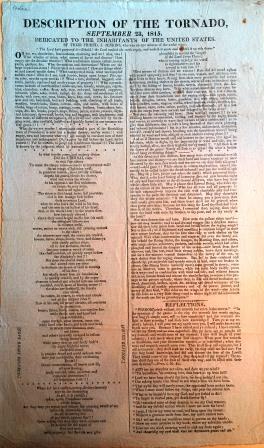
Oh wo, wo, desolation, lamentations, mourning and wo! Alas, alas!
What wrecks of ruins, what scenes of havoc and distress!
Middlesex County, Massachusetts – 1851
Published in 1852, The Tornado of 1851, in Medford, West Cambridge and Waltham, Middlesex County, Mass. compiled anecdotal accounts to provide a picture of the course, speed, and power of this tornado. Also included are reports produced by various committees that estimated the cost of the damage. If you have ever been in an area where a tornado is imminent, then the description of this mid-19th-century event by Rev. Charles Brooks may seem familiar:
The state of the atmosphere from sunrise to the time of the tornado, on August 22d, was peculiar. Many spoke of a dead closeness, a remarkable want of elasticity in the air. Many complained of lassitude from this cause. Clouds gathered; and there were appearances of wind approaching; but it did not come. For an hour before the tornado, there was here almost a perfect calm; yet it was a calm prophetic of, we knew not what. An old sea-captain told his wife, at 4 o’clock, P.M., that “if he was at sea he should expect a waterspout.” (p.5)
They, who, like us, were in it, and have seen its terrible ravages, need not be told that it exhibited a power in the elements never witnessed by the oldest inhabitant of this region. Houses strongly built were demolished, as if they had been made of paper. Oak and walnut and cedar trees, of the largest growth, were entirely uprooted, some of them snatched out of the ground and carried through long distances…” (p.12)
Lawrence, Massachusetts – 1890
The collection of photographs that prompted this blog post provide visual aid for the words of Charles Brooks. The images below show houses reduced to splinters, some with citizens viewing the damage. The last is a good illustration of the seeming randomness of a tornado, with a large crater in the foreground and yet, nearby in the background, houses standing intact.
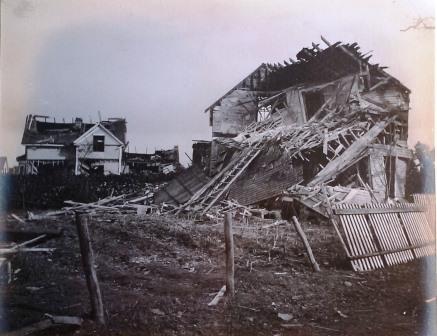
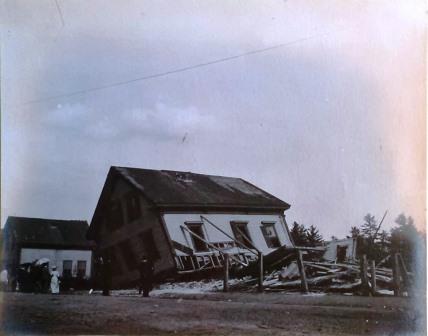
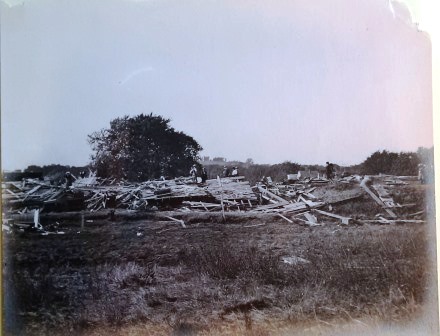
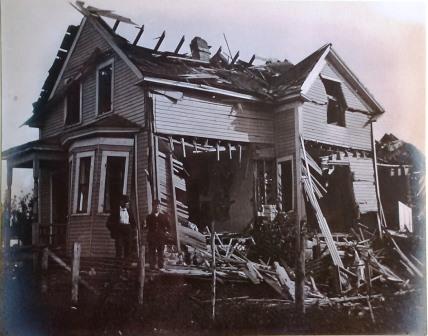
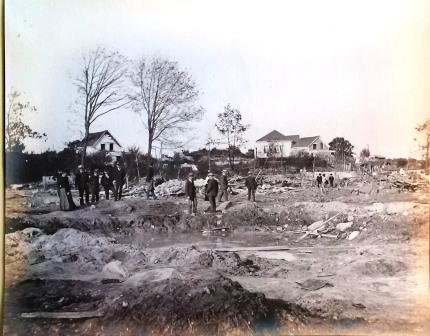
Worcester County, Massachusetts – 1953
More recently, a tornado swept through Worcester County, Mass. Following that event the Worcester Telegram and the Worcester Evening Gazette produced a special publication to detail the path of the storm, the damage done, and the efforts to clean up in the aftermath, called Tornado: a record in pictures of the catastrophe that struck Worcester and cetral Massachusetts, June 9, 1953
.
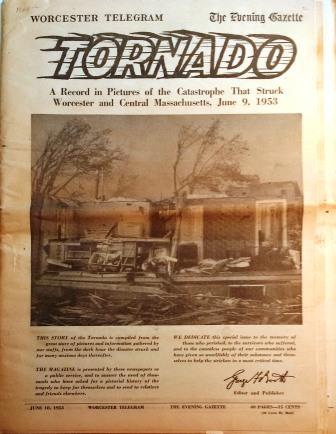
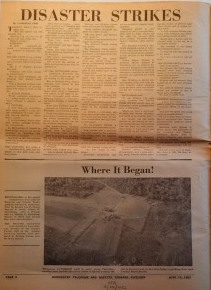
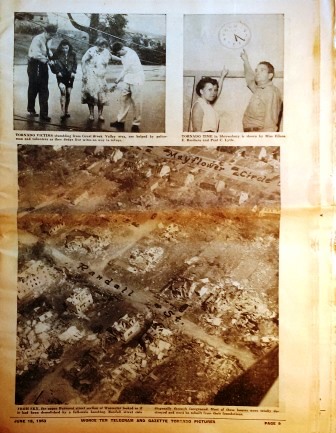
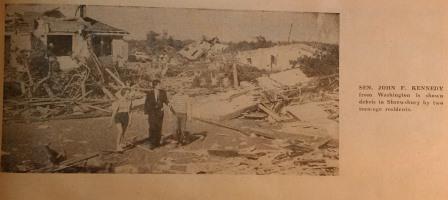
“Sen. John F. Kennedy from Washington is shown debris in Shrewsbury by two teenage residents.”
To find out what else the MHS holds about natural disasters you can search our online catalog, ABIGAIL. If you want to come in and view these items or any others you find in the catalog, take a look at our website to learn more about Visiting the Library.
*****
1 “Hurricanes: Science and Society : 1815- the September Gale,” University of Rhode Island, accessed 3 November 2017, http://www.hurricanescience.org/history/storms/pre1900s/SeptemberGale/.

